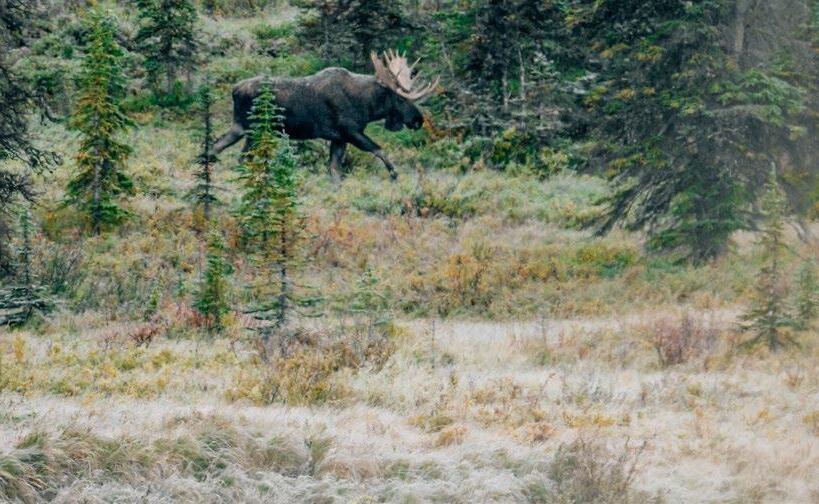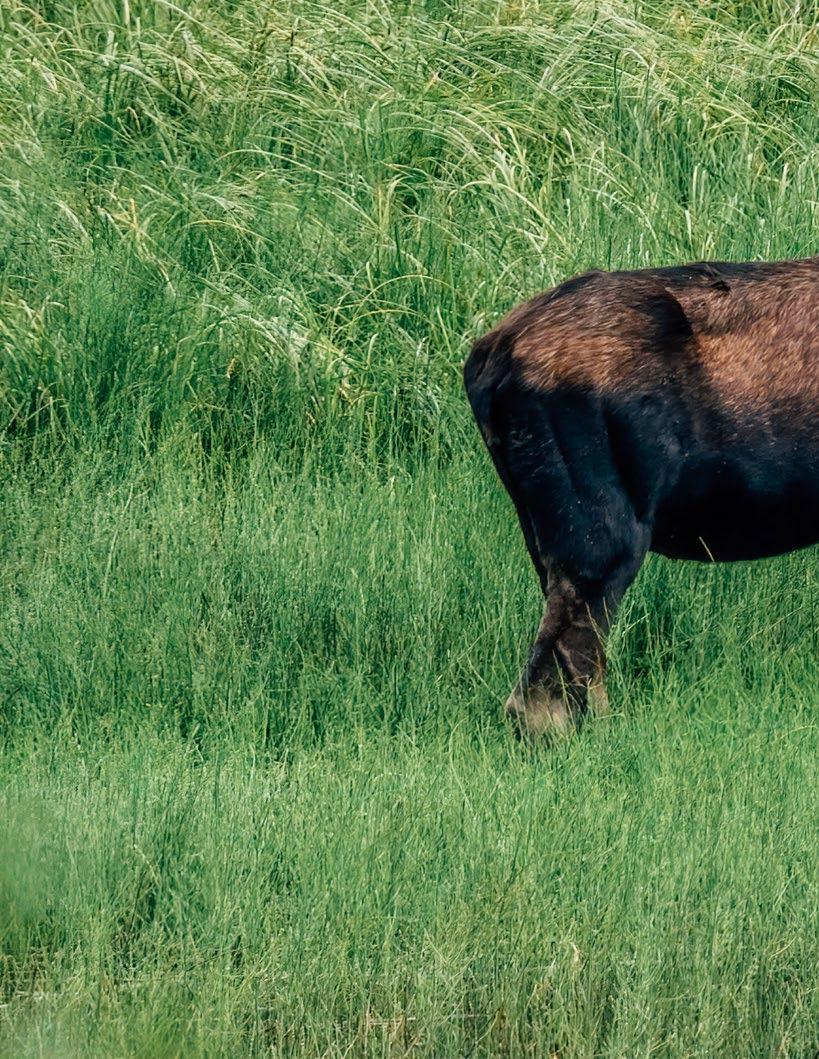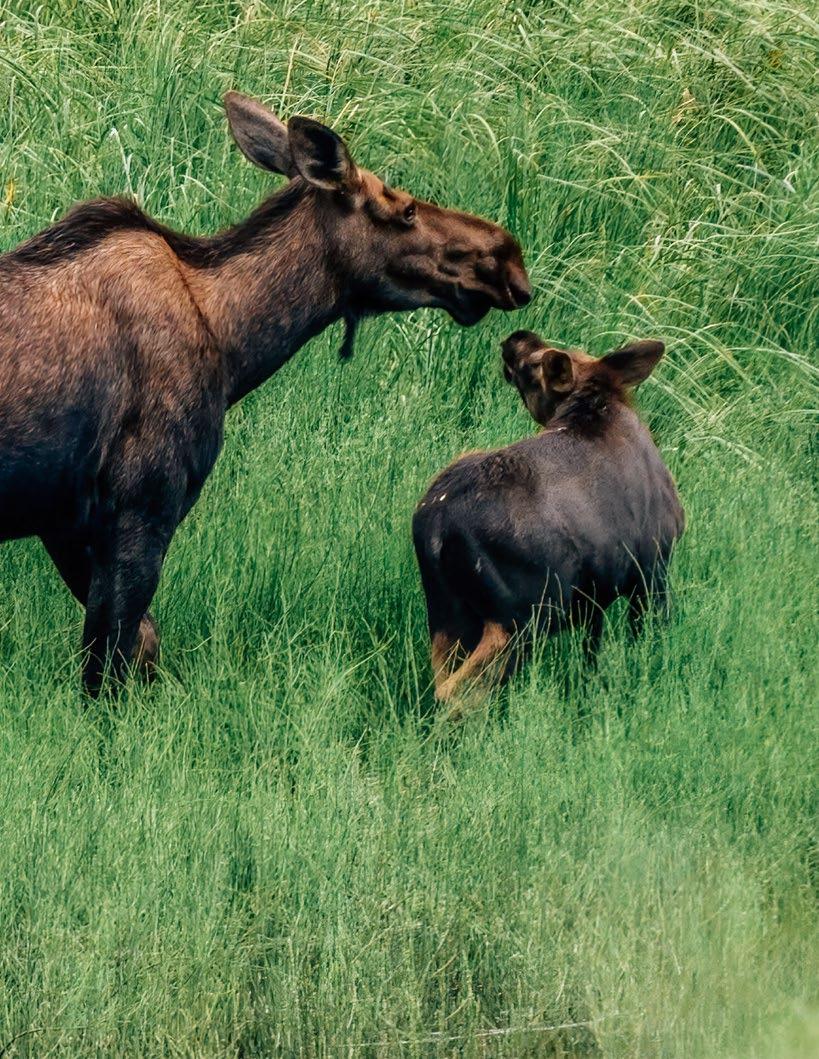
4 minute read
Klappan Moose Stewardship Plan (MSP
KLAPPAN MOOSE STEWARDSHIP PLAN
The Klappan is a sacred area to the Tahltan with a high density of ancient, traditional, and current dwellings, camps, sites, trails, harvesting, and gathering areas. It is an area important for Tahltan members to meet their cultural and sustenance needs throughout the year.
Above: Bull moose travelling to feed, dawn, early September. It is also an area used by licensed hunters, primarily for moose hunting, who in the past have accessed the area via the rail grade traversing the length of the area.
It is an area with a history of conflict over land use practices, uses, overlapping, and at times competing land uses between the Nation and licensed hunters. In addition, there have been concerns on the status of the population with differing views of the moose population numbers in the Klappan. BC and the Tahltan Central Government (TCG) have worked together on the Klappan and the associated land uses, moose numbers, and hunting issues. In 2018, two Limited Entry Hunting (LEH) seasons were established to address concerns on the sustainability of the moose harvest and to avoid overcrowding by distributing hunters over time and space.
In 2017, the Klappan Management Board, a joint decision-making body of BC and Tahltan representatives was established for the area and in 2018 endorsed the licensed hunting regulation changes for the Klappan.
Tahltan Nation is a member of the 3Nations Society and involved in the 3NBC Collaborative Stewardship Forum (CSF) three-year initiative. Under the 3NBC CSF Initiative, Klappan moose monitoring and stewardship planning is being delivered to support shared moose management for the area.
Klappan Moose Classification Survey
The Tahltan Wildlife Department acquired funds in 2019 to conduct an early winter moose count in the Klappan, to collect information on the numbers of bulls, cows, and calves just after the hunting season and after rut.
Tahltan Guardians and Wildlife Department conducted the helicopter survey in early December 2019 and observed:
Ȗ 351 moose
94
BULLS
157
COWS
46 + 4
CALVES (Classified) CALVES (Unclassified)
• There were 44 groups of a cow with a calf, and one group of cows with twin calves.
• A bull ratio of 46.5 ± 9.6 (90% confidence interval [CI]) bulls/100 cows was observed with a sample size of 296 and a precision level of 20.5 % (90% CI).
• A calf ratio of 25.2 ± 6.5 (90% CI) calves/100 cows was observed with a sample size of 253 and a precision level of 25.8 % (90% CI).
Another survey occurred in the winter of 2020 flying similar areas in the Klappan; however, due to a freeze/ thaw event in December we were unable to fly and
conduct the survey until February 2021. The survey was led by Guardians and Wildlife Department staff.
• A bull ratio of 58.5 ± 15 (90% CI) bulls/100 cows was observed with a sample size of 186 and a precision level of 24.0 % (90% CI).
• A calf ratio of 28.2 ± 9 (90% CI) calves/100 cows was observed with a sample size of 150 and a precision level of 32.4 % (90% CI).
The two surveys are similar in numbers for bulls and calves with results at or below low-density moose population indicators (50 bulls:100 cows; 25 calves:100 cows). The slight difference between years could be related to the 2021 survey occurring later in the winter, where moose begin to group at lower elevations due to snow depth. The move to lower elevations and larger group size could be creating higher bull ratios than just after rut when moose are more dispersed across the larger landscape than late winter.
A population estimate survey is being planned for the winter of 2021-22 which will allow for comparison to the 2019 survey. It will be led by Guardians and Wildlife Department staff.
Additional wildlife viewed in the study area included:
2
WOODLAND CARIBOU (Rangifer tarandus caribou)
17
STONE’S SHEEP (Ovis dalli stonei) All this information will be added to the Tahltan knowledge and local knowledge, to support the Klappan Moose Stewardship Plan, and the Klappan Management Board for further consideration on the LEH hunting seasons and other management items.
4
MOUNTAIN GOATS (Oreamnos americanus)
2
WOLVES (Canis lupus)
2
WOLVERINES (Gulo gulo)
5
ELK Cervus elaphus)
Klappan Moose Stewardship Plan
The Klappan Moose Stewardship Planning process commenced in 2020 but has been delayed due to the pandemic and COVID-19 restrictions. It is being supported through the 3NBC CSF and is being delivered through the Tahltan BC Fish and Wildlife Working Group. Up to the summer of 2021, most of the work done to date has been focused on compiling available information, developing the planning framework and outline, with more recent activities including:
1. Review of existing information and management plans; 2. Assessing licensed hunter harvest trends; and, 3. Community based surveys to gather community knowledge and perspectives.
The planning process is currently working on the community knowledge gathering stage and will be moving on to the below stages in the winter of 2021:
1. Applying Tahltan, local and scientific knowledge to develop the plan and set the process for shared moose management decision-making;
2. Setting community-based population, habitat, harvest, predator, and land use objectives consistent with provincial and Tahltan moose management requirements;

3. A moose stewardship plan consistent with moose management direction from Tahltan land use plans and conservation initiatives, Klappan Decision-Making and Management Board, and legal higher-level plan objectives; and,
4. Community-based review and approval process for Tahltan.
Further information and draft results from the planning work will be shared in the winter.











